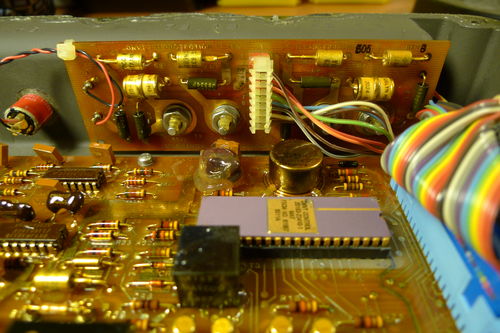2008/11/29 01:28:07
Teardown: TA-954/TT Field Telephone
EDIT 2011/03/27: Took new photos, edited some text.
A while ago I got the idea of putting a bluetooth headset in a field radio handset, ala the venerable staticfree hack, or the thinkgeek version, but far classier.Procuring a H350/U handset (the only one that can act like a full-duplex handset) off of ebay was fairly easy, but the handset turned out to be an impossible to hack brick of plastic. Lacking the testicular fortitude to take a dremel to my brand new fancy military handset, I considered chopping the plug off the cord, and splicing in a headset.
Unfortunately, the H350/U comes with this great metal plug, which was just too neat to throw away.
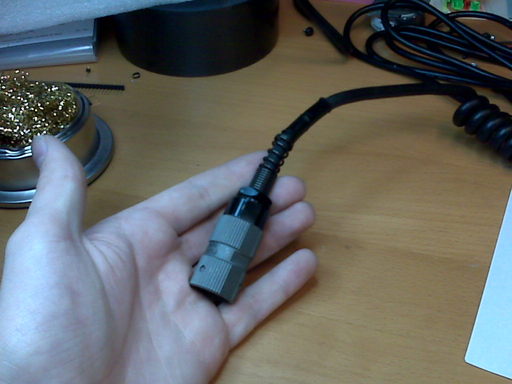
Sockets, however, are essentially impossible to buy by themselves. It would just be easier to... teardown a compatible field telephone.
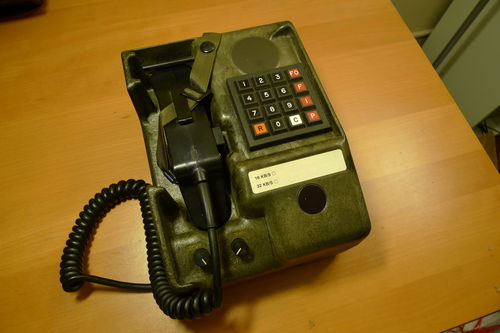
You gaze, mortal, upon the TA-954/TT Digital Non-Secure Voice Terminal. The plan here is to recover that neat-looking keypad,

and, of course, the six-pin socket.
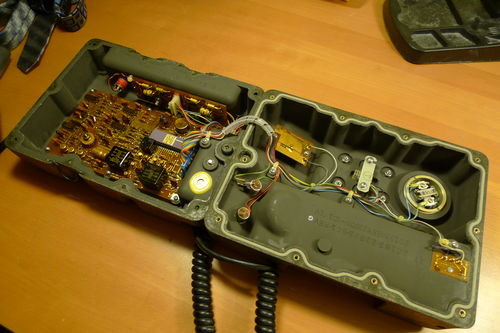
Working on military equipment is interesting. Unlike consumer electronics, military designers acknowledge that their products will be used by men in sandy countries who will be shot at occasionally, and design accordingly. None of the screws are hidden under stickers, and they all thread into brass inserts. Nice.
The electronics are protected from environmental incursion by an amusingly convoluted seal, which is lubricated with an amazingly tenacious grease. On the left, we have all the interface electronics, with the main board and line terminals on right.
The interface electronics are pretty standard. The round thing's the ring speaker, the rectangular board on the upper left might be some sort of hangup sensor, the pots on the upper right are volume controls.
Lower middle is the keypad, which appears to be secured with four (metric) nuts, then glued down. Lower right is a visual ring indicator.
The main board is somewhat more interesting.

Close up:
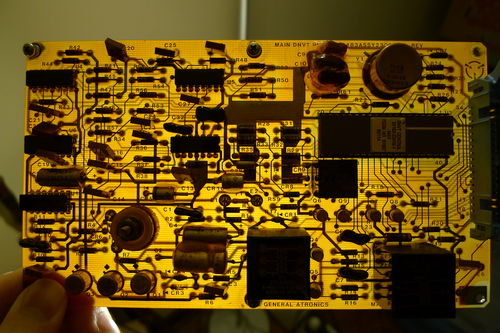
Good old 1980s electronics, with lots and lots of discrete elements. Everything coated with a waterproofing/anticorrosion varnish, except for the enormous microcontroller. The main board talks to everything else through a locking 40-pin ribbon connector. Pressure equalizer upper right.
Unfortunately for our ostensible goal, the socket (visible in the first shot) appears to be molded into the case, impossible to liberate without extensive surgery. Guess I'll try my hand at splicing a field telephone cable. (Just, you know, in case I need a fully functioning field telephone at some point in the future)
Whoops! Turns out there is.
These look like a bunch of beefy inductors and zener diodes. (he guessed, not having bothered to look up any of the part numbers) They probably kill surges and everyday line noise dead, but I still doubt this is actually EMP hard, since there's nothing like a faraday cage in evidence, and there's multiple unshielded penetrations through the casing. (volume controls, keypad, etc)
Beating on the handset socket some more revealed that it was actually screwed into the case, not molded into it. Twenty minutes of swearing at a vice grip extracted it in more or less one piece. Hooray! Wish I had found this out three years sooner!
